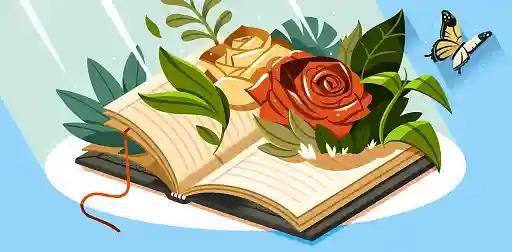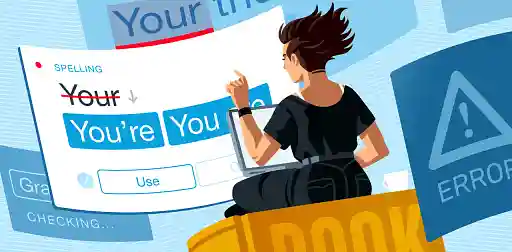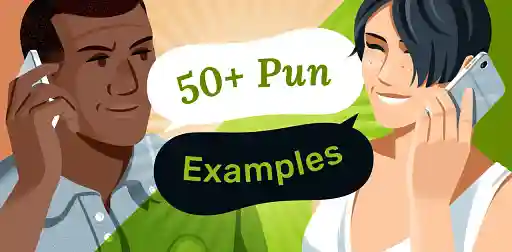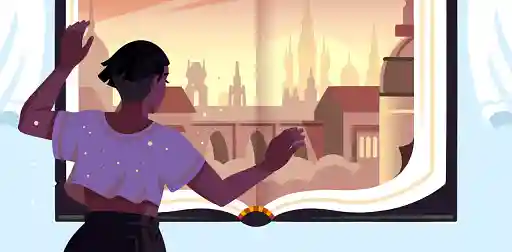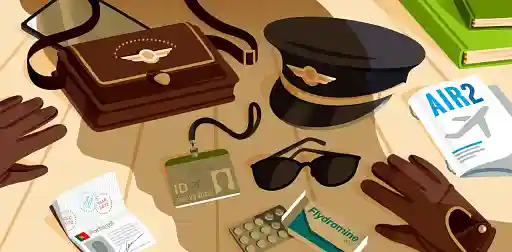Last updated on Oct 15, 2025
29 Must-Know Examples of Repetition in Literature
Martin Cavannagh
Head of Content at Reedsy, Martin has spent over eight years helping writers turn their ambitions into reality. As a voice in the indie publishing space, he has written for a number of outlets and spoken at conferences, including the 2024 Writers Summit at the London Book Fair.
View profile →Editing 101 will always tell you the same thing: avoid repetition in your writing. But make no mistake, repetition isn’t a pariah in the world of prose! In fact, when executed with finesse, it can make a piece of writing all the more compelling.
This post will take you through the basics of repetition. And because the best way to understand a literary device is to see it in skilled action, we’ll also cover 29 remarkable examples of repetition in literature. (To skip past the next section where we define repetition, you can jump straight to those examples!)
Repetition definition
Repetition is a literary device whereby sounds, words, phrases, or full sentences are used multiple times throughout a text. It’s used to emphasize key points, achieve a certain rhythm, tone, or style of prose, or evoke emotions — which is why you’ll often find it in poetry.
Q: What are the most common tonal issues in early manuscript drafts, and how can authors address them?
Suggested answer
Tone – is the mood of a scene or story, in general. It’s like a bag of tricks containing style, voice and expectation. It promises a specific experience.
Emotional imbalances – create discord in the tone when a protagonist laughing or thinking something is funny when something sad or difficult has happened do not gel. It could be they have a dark/offbeat sense of humor, but this needs to have been conveyed for the above to work, so the reader stays immersed instead of stopping and thinking, eh?
Skewed focus – detracts from intended tone when, for example, authors use too much minute detail during a (high-tension) scene where you’ve got to exit the box before your air runs out! This upsets focus as we’re not interested in the wallpaper motif right now. Add sensory details relevant to the conflict, not ones that detract. Generally, you only need a basic amount of detail for a scene to be plausible and effective. Overdoing it misdirects and kicks out your pace and tension, which are part of the tone.
Tense – switching tense and POV format interfere with the author’s writing style and the voice of their narrator(s). Present to past tense in the same paragraph, and first to third person POV intermittently is jarring and ruins the way you tell. Your story unfolds and your characters talk on the stage you give them, but for this to remain intact, keep your tense clear. Not defining this means the reader cannot focus on which time or telling we are in and your tonal stage falls apart.
Voice – monotony. Character diction (word choice), sentence structure (simple or complex) and syntax (word arrangement) should be individual. If Jed and George both use street vernacular, one can express in a sharper, snappier tone, the other could use a more probing, gentler approach. Their tones steer reader insight and color perspective, populating the story with personality. If everyone speaks the same way, the effect is monologuing.
Tone or tune rainbow – excess shifting of dramatic tone alienates your reader. For a sinister thriller, overuse of slapstick comedy and romantic intrigue distorts reader expectation, just as whimsical reverie to hardboiled crime could be a choke. Not that you can’t have wild and wonderful swings! But the tones you use should suit your overall concept. Perhaps think of your work as a piece of music. Plotting your story as a tune with rhythm, tempo, key, etc. can aid 'tonal shifts' — and help compose the hues of your intentions and your reader's feelings.
Agatha is available to hire on Reedsy ⏺
Characters who sound the same is probably one of the most common tonal issues I see. If your characters all sound the same, none of them stick out, which creates a flattened tone throughout the story. Some writers will add (and write the text in) accents, but if overdone, this can be jarring and an obvious attempt to try to distinguish the characters from each other. It's more important to concentrate on the things the characters say, not how they say them. The content and syntax of their dialogue should be the thing that distinguishes them, more than any stutter or accent you give them.
Brett is available to hire on Reedsy ⏺
However, while it can highlight important details or enhance rhythm, repetition needs to be done with care. If you accidentally repeat words or re-state the same information for readers over and over (and over) again, it can become jarring. For instance, if you’ve already told readers that a character has an unusual beauty mark on their shoulder, mention it once and leave it at that. Hearing about the beauty mark every time that character is in a scene is tiring. If it’s crucial to bring it up more than once, find new and interesting ways of bringing attention to it — instead of just stating its existence, maybe you can have another character comment on it.
If you’re going to repeat a word, phrase, or idea, it needs to have a purpose. Pinpoint exactly why it needs to be said again — or if there’s another way you present it that adds more to the narrative.
To figure out the right way to use this literary device, you first have to learn the different types of repetition.
🤓 Hire an editor who can help you put 'repetition' to good use.
Rosie W.
Available to hire
A conscientious and enthusiastic indexer, my subject specialisms are Geography, Environmental/Earth Science, Social Science and Economics.
Michael F.
Available to hire
Professional editor and proofreader with extensive experience in the publishing industry, working with both nonfiction and fiction titles.
Eva Maria D.
Available to hire
Multilingual editor (EN, ES, DE, FR, IT) turning drafts into publishing gems — guiding authors to self or traditional publishing success.
Types of repetition
Did you know that there are at least 15 main types of repetition? They fall into two categories: words and sounds. Let’s start with...
Repetition of Words
1. Anadiplosis
The last word of a clause or sentence is repeated as the first word of the next one.
Example: "Fear leads to anger; anger leads to hatred; hatred leads to conflict; conflict leads to suffering." — Yoda, in Star Wars Episode I: The Phantom Menace.
2. Anaphora
The word or phrase at the beginning of successive clauses or sentences is repeated.
Example: “It rained on his lousy tombstone, and it rained on the grass on his stomach. It rained all over the place.” — The Catcher in the Rye by JD Salinger
3. Antistasis
The repetition of words or phrases in different or contrary senses.
Example: “We must, indeed, all hang together or, most assuredly, we shall all hang separately.” — Benjamin Franklin
4. Conduplicatio
The frequent repetition of a word or phrase within a paragraph, in order to expand upon its meaning.
Example: “Now is the time to make real the promises of democracy. Now is the time to rise from the dark and desolate valley of segregation to the sunlit path of racial justice. Now is the time to lift our nation from the quicksands of racial injustice to the solid rock of brotherhood. Now is the time to make justice a reality for all of God's children." — Martin Luther King, Jr.
5. Diacope
The repetition of words separated be additional words, which alter their meaning.
Example: “We few, we happy few, we band of brothers.” — Henry V by Shakespeare
6. Epanalepsis
The word both at the beginning and at the end of the clause or sentence is repeated.
Example: “Next time there won't be a next time.” — Phil Leotardo, in The Sopranos
Q: What is the single most important piece of advice for first-time novelists?
Suggested answer
Write the story you want to write, need to write--and want to read. Don't think about or worry about market trends, or how you will position your book on the market, or writing a book that will blow up on BookTok. A novel is a marathon, and in order to see it all the way through, you have to love your story (you can dislike some of your own characters of course, but you need to be deeply passionate about the overall story you are telling). In practical terms, by the time you write, revise, and publish your novel, it's likely that overall publishing trends will have shifted anyway. Write the book you want to write--things like what readers want, what publishers want, what agents want, can come later!
Kristen is available to hire on Reedsy ⏺
Read many books in your genre and look for why you like that particular book or don't like it. Get a feel for what works and what doesn't. Try to read books that sold well and were published in the last 5-10 years. Publishing norms change and styles change with time.
For instance, in the past, much time was spent setting up the story, and many opening paragraphs may have been spent describing the scenery and visual elements. While those elements are still important, modern books move at a much faster pace and spend less time on these elements by using sentences of description woven into the narrative rather than information dumps and blocks of long description that can slow the pace.
So, reading current books in your genre is the best way to learn writing methods yourself.
Melody is available to hire on Reedsy ⏺
7. Epimone
The word or phrase is repeated to place emphasis on its meaning.
Example: “Mr. Dick shook his head, as utterly renouncing the suggestion; and having replied a great many times, and with great confidence, ‘No beggar, no beggar, no beggar, Sir!’” — David Copperfield by Charles Dickens (Are you a Dickens fan? Read up on 15 of his classics novels in our guide to Dickens!)
8. Epiphora
The repetition of a word or phrase at the end of a series of clauses or sentences.
Example:
If you did know to whom I gave the ring,
If you did know for whom I gave the ring
And would conceive for what I gave the ring
And how unwillingly I left the ring,
When naught would be accepted but the ring,
You would abate the strength of your displeasure.
— The Merchant of Venice by Shakespeare
9. Epizeuxis
The successive repetition of a word or phrase within one clause or sentence.
Example: “The horror, the horror.” — Heart of Darkness by Joseph Conrad
10. Negative-Positive Restatement
An idea or phrase is presented in negative terms, and then repeated in positive terms.
Example: “The tragedy of old age is not that one is old, but that one is young.” — The Picture of Dorian Gray by Oscar Wilde
11. Polyptoton
The same root word is repeated in different forms.
Example: “Today you are You, that is truer than true. There is no one alive who is Youer than You.” — Happy Birthday to You! by Dr. Seuss
12. Symploce
The repetition of a word or phrase both at the end and at the beginning of a clause or sentence. (In other words, a combination of anaphora and epiphora.)
Example:
"The yellow fog that rubs its back upon the window-panes,
The yellow smoke that rubs its muzzle on the window-panes…”
— “The Love Song of J. Alfred Prufrock” by T.S. Eliot
Sound Repetition
Do you hear that? Is it bat, a rat, or a gnat? And speaking of sounds that repeat themselves, let’s take a look at...
13. Alliteration
The successive repetition of consonant sounds in the stressed part of a word.
Example: “She sells seashells by the sea-shore.”
14. Assonance
The vowel sounds are repeated.
Example: “"Hear the mellow wedding bells…” — “The Bells” by Edgar Allan Poe
15. Consonance
The repetition of consonant sounds in successive or closely connected words. The difference between consonance and alliteration is that alliteration is at the beginning of the word (so “Peter Piper”), but consonance can be anywhere in the word.
Example:
I'll swing by my ankles.
She'll cling to your knees.
As you hang by your nose,
From a high-up trapeze.
But just one thing, please,
As we float through the breeze,
Don't sneeze. — “The Acrobats” by Shel Silverstein
Q: What daily writing routines can help authors maintain consistent productivity?
Suggested answer
+ Never underestimate the power of enough sleep. This can cure more things than we know - how we show up, what we're capable of tackling each day.
+ Nourishing food to fuel the mind.
+ Movement - even if it's a walk around the block listening to a podcast, music or just deep in thought (often the best times when ideas arise).
After these three things are locked in:
+ Quiet, undistracted time blocks (even if it means phone in another room for 90 mins)
+ A laptop that has nothing else except Word on it (no website access).
+ For those who are visual, keeping a yellow sticky note daily "checklist" on a wall, to encourage a daily writing tally.
+ Ask for feedback for continual improvement.
Leoni is available to hire on Reedsy ⏺
There are four things that I consider before settling in to write.
What sounds are there? The best is silence, but in a city environment this is impossible. If there are specific loud that I want to block out, I listen to drone music. This consists mostly of long, sustained notes (no melodies) and comes from the American and German post-war experimental musical traditions. The texture of the sounds is often rich which works for this purpose quite well. It has a meditative effect. Failing this, music without lyrics is also good.
What is my phone doing? Just switch it off.
Social media. Along with my phone, this is designed to distract. What I do is log out of my social media accounts. If I automatically go back in, I'm then met by the login page. This doesn't sound like much of a difference, but is just enough to nudge myself into becoming mindful of what I'm doing and what my present purpose it. And mindfulness is key.
Lastly, I take a page of Hemingway's advice: "The first draft of anything is s**t." It's ok to produce bad writing. In fact, it's totally ok; actually it's great. Why? Because my ideas are now down on the page, even if it's absolutely horrible. Nobody ever simply writes a finished product straight off the bat. I'll make it better later and that is a different process.
Don is available to hire on Reedsy ⏺
Get all domestic and admin chores out the way first, so that there is nothing else on your mind when you sit down to write. Then just stick at it for as long as possible.
Andrew is available to hire on Reedsy ⏺
Okay, now that we’ve gotten seamlessly up to speed (pardon the alliteration), on the different types of repetition, let’s look at some exemplary examples from literature (pardon the polyptoton).
Repetition examples in literature
Let’s turn this section into a little quiz. Try to guess what kind of repetition each quote is using as you read through — the answers will be provided at the bottom!
Example #1: The Hitchhiker's Guide to the Galaxy by Douglas Adams
"Space is big. You just won't believe how vastly, hugely, mind-bogglingly big it is. I mean, you may think it's a long way down the road to the chemist's, but that's just peanuts to space."
Example #2: The Innocents Abroad by Mark Twain
"They are not paid for thinking--they are not paid to fret about the world's concerns. They were not respectable people--they were not worthy people--they were not learned and wise and brilliant people--but in their breasts, all their stupid lives long, resteth a peace that passeth understanding!"
Example #3: Deep River by Shusaku Endo
“Hatred was spreading everywhere, blood was being spilled everywhere, wars were breaking out everywhere.”
Example #4: A Tale of Two Cities by Charles Dickens
“It was the best of times, it was the worst of times, it was the age of wisdom, it was the age of foolishness, it was the epoch of belief, it was the epoch of incredulity, it was the season of Light, it was the season of Darkness, it was the spring of hope, it was the winter of despair, we had everything before us, we had nothing before us, we were all going direct to Heaven, we were all going direct the other way—in short, the period was so far like the present period, that some of its noisiest authorities insisted on its being received, for good or for evil, in the superlative degree of comparison only.”
Q: How can authors protect their rights when publishing, especially in the age of AI?
Suggested answer
I don't think anyone can fully protect themselves. If you act in good faith you will find that most other people will do the same. There will always be rogues, but selling books is hard enough if you are the real author, even harder if you have stolen it.
Andrew is available to hire on Reedsy ⏺
Example #5: Beloved by Toni Morrison
“Beloved is mine; she is Beloved.”
Example #6: Lolita by Vladimir Nabokov
“What I present here is what I remember of the letter, and what I remember of the letter I remember verbatim (including that awful French).”
Example #7: Outer Dark by Cormac McCarthy
“And stepping softly with her air of blooded ruin about the glade in a frail agony of grace she trailed her rags through dust and ashes…”
Answers: a) Epimone; b) Symploce; c) Epistrophe; d) Anaphora; e) Epanalepsis; f) Anadiplosis; g) Assonance
Examples of repetition in poetry
Repetition is especially prevalent in poetry, as it can help achieve a certain resonance with readers. Again, read through the following examples of poetic repetition and guess what type each uses.
Example #1: "Stopping by Woods On a Snowy Evening" by Robert Frost
“The woods are lovely, dark, and deep,
But I have promises to keep,
And miles to go before I sleep,
And miles to go before I sleep.”
Example #2: "Do Not Go Gentle into the Good Night" by Dylan Thomas
“Do not go gentle into that good night,
Old age should burn and rave at close of day;
Rage, rage, against the dying of the light.
Grave men, near death, who see with blinding sight,
Blind eyes could blaze like meteors and be gay,
Rage, rage against the dying of the light.”
Example #3: “Annabel Lee” by Edgar Allen Poe
“It was many and many a year ago,
In a kingdom by the sea,
That a maiden there lived whom you may know
By the name of Annabel Lee;
And this maiden she lived with no other thought
Than to love and be loved by me.”
Q: What are the most common craft mistakes new authors make?
Suggested answer
One of the biggest mistakes I see from new authors is that they finish writing their manuscript and then they think they are done and ready for an editor to go through and review.
Writers need to be their own editors first. Because there are so many potential new authors every day, it's imperative that writers go back and edit their work thoroughly. That means reading, and rereading what they've written to understand how their characters develop through their novel, or how the topics that they brought up in chapter two are refined and built upon in chapter nine. Through that reading process, writers should be editing their work as they find pieces that aren't strong enough or need to be altered to make a better overall manuscript.
Matt is available to hire on Reedsy ⏺
The most common writing mistake I see from first-time authors is cramming too much into the first chapter. Your first chapter is a meet and greet, where you establish credibility, likability, and optimism that the book is worth the reader's time. Hook the reader, show your personality, but don't dump all your knowledge on them at the beginning of the book. Take them on an interesting, helpful journey,
Mike is available to hire on Reedsy ⏺
Example #4: "Song of Myself, 3" by Walt Whitman
“There was never any more inception than there is now,
Nor any more youth or age than there is now,
And will never be any more perfection than there is now,
Nor any more heaven or hell than there is now.”
Example #5: "A Child is Born" by Stephen Vincent Benet
“Life is not lost by dying! Life is lost
Minute by minute, day by dragging day,
In all the thousand, small uncaring ways.”
Example #6: "The Gnome, The Gnat, & The Gnu" by Shel Silverstein
"I saw an ol' gnome
Take a gknock at a gnat
Who was gnibbling the gnose of his gnu.
I said, "Gnasty gnome,
Gnow, stop doing that."
Example #7: "Coda" by Dorothy Parker
“There’s little in taking or giving,
There’s little in water or wine;
This living, this living, this living
Was never a project of mine.”
Answers: a) Epizeuxis; b) Assonance; c) Consonance; d) Epiphora; e) Diacope; f) Alliteration ; g) Epizeuxis
Now that you know how to make repetition your writing’s best friend, let’s give a shout-out to your best friend when it comes to removing unnecessary repetition: CTRL+F. We are all guilty of over-relying on specific words that crop up in our writing again and again. Get acquainted with your own habitual words, and then use CTRL+F to sweep your document for them. Find, remove, repeat! 😊


